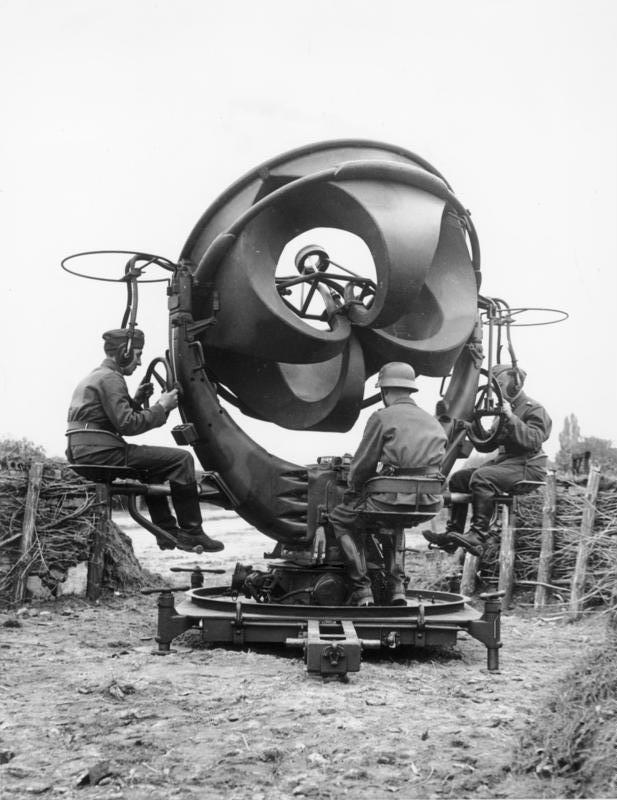
Zf612.Sound location equipment in Germany, 1939. It consists of four acoustic horns, a horizontal pair and a vertical pair, connected by rubber tubes to stethoscope type earphones worn by the two technicians left and right. The stereo earphones enabled one technician to determine the direction and the other the elevation of the aircraft. This picture is from Wikipedia, look for the URL below.
———————————————-
This is my 3rd albums about WWII Tidbits from the www and this one is started with aircraft sound redetection equipment.
————————————-
Sound Detection Equipment
The Battle of Bataan and the Siege of Corregidor was fought before sophisticated and common RADAR Equipment. The Anti-Aircraft defense in these two battles had to depend on this sound detection and optical detection equipment. During the middle of WWII this sound detection equipment became obsolete because of the development of RDAR.
Friends sent me or made me aware of the next 3 images and sent comments.

Zf613. One sound detection device is partially shown on page 124 at this publication with Japanese troops behind it, click here for the source: MB45 Philippine Expeditionary Force by Gasei 1943.pdf. It is available in the Corregidor.org Library. The researcher of the writing team of the new book “ Relentless Hope: A True Story of War and Survival, by David L. Britt”, John Duresky made me aware of it.
My friend John Moffitt who has visited Corregidor 60 times said this: The US Army had sound locators for this purpose on Corregidor. Big elephant eared beasts mounted on a trailer.
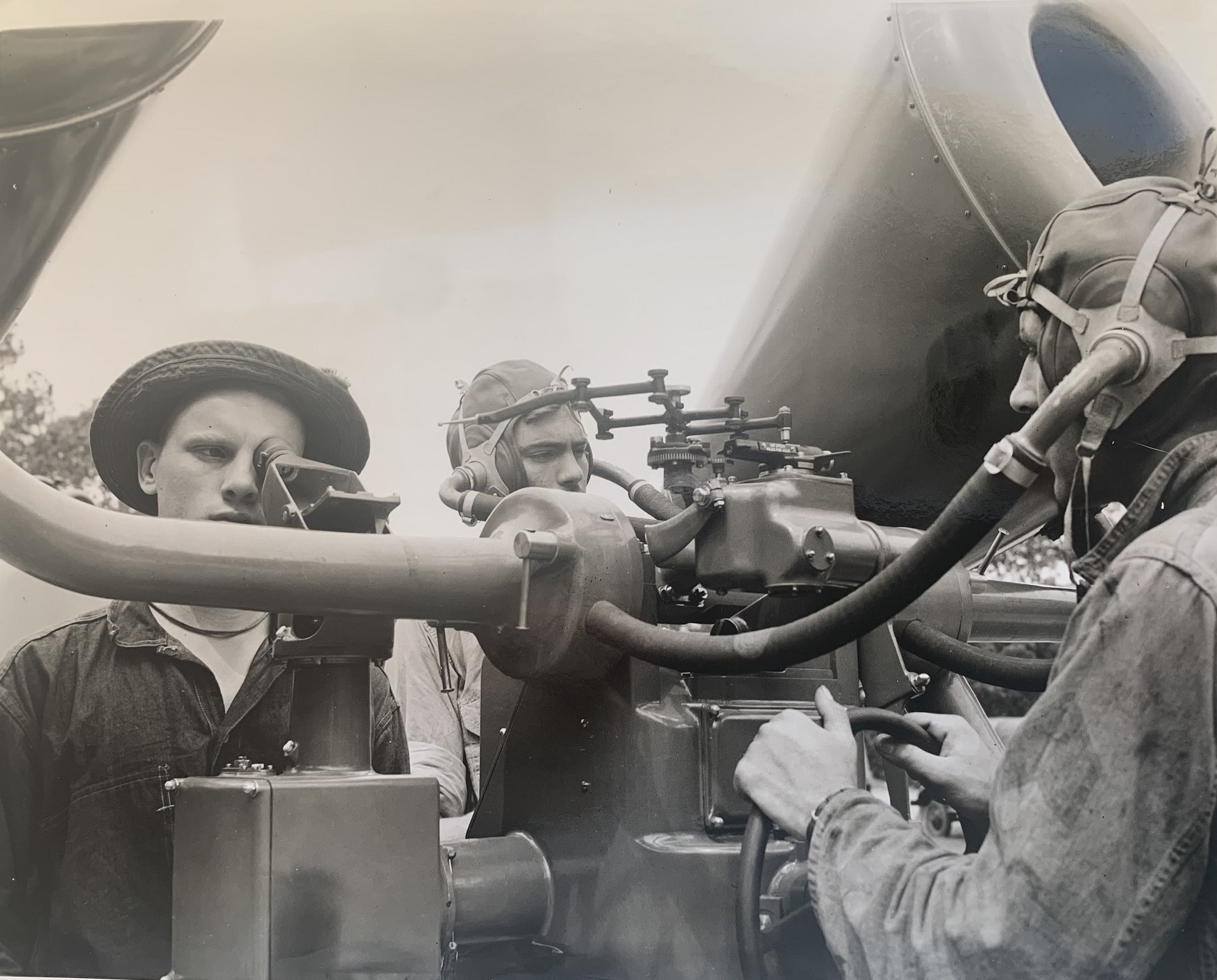
Zf614. This is a PLANE DETECTOR HEARING DEVICE wire photo, dated 21th May 1940. John Duresky sent this and he said: Not exactly user-friendly. According to this wire photo it took at least three men to operate one of these hearing devices for planes.

Zf615. This is the description of the previous image # Zf614; this is a PLANE DETECTOR HEARING DEVICE wire photo, dated 21th May 1940. John Duresky sent this and he said: Not exactly user-friendly. According to this wire photo it took at least three men to operate one of these hearing devices for planes.
Wikipedia has a page about “acoustic locations”, I copied 4 images, click here for the URL:
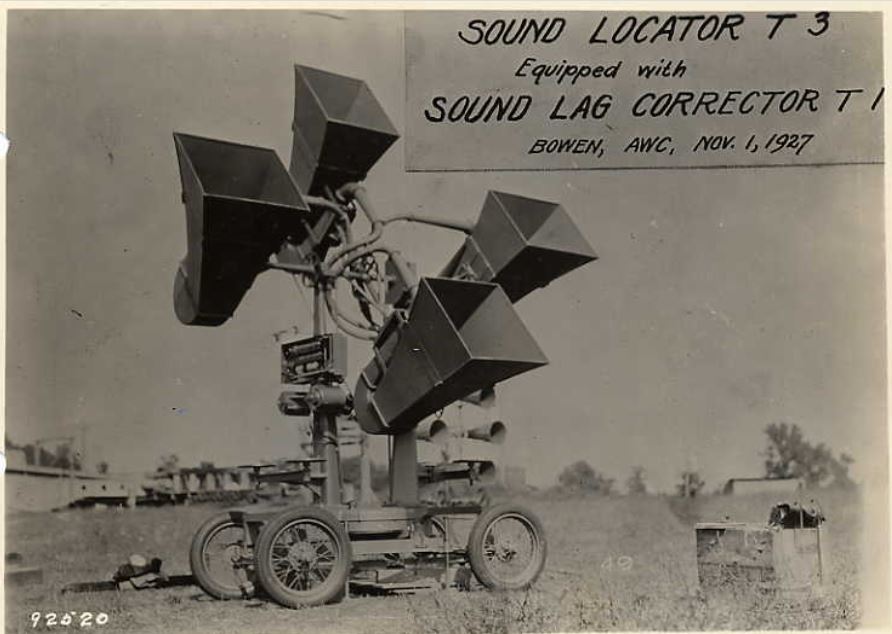
Zf616.. This picture is from Wikipedia, look for the URL above.
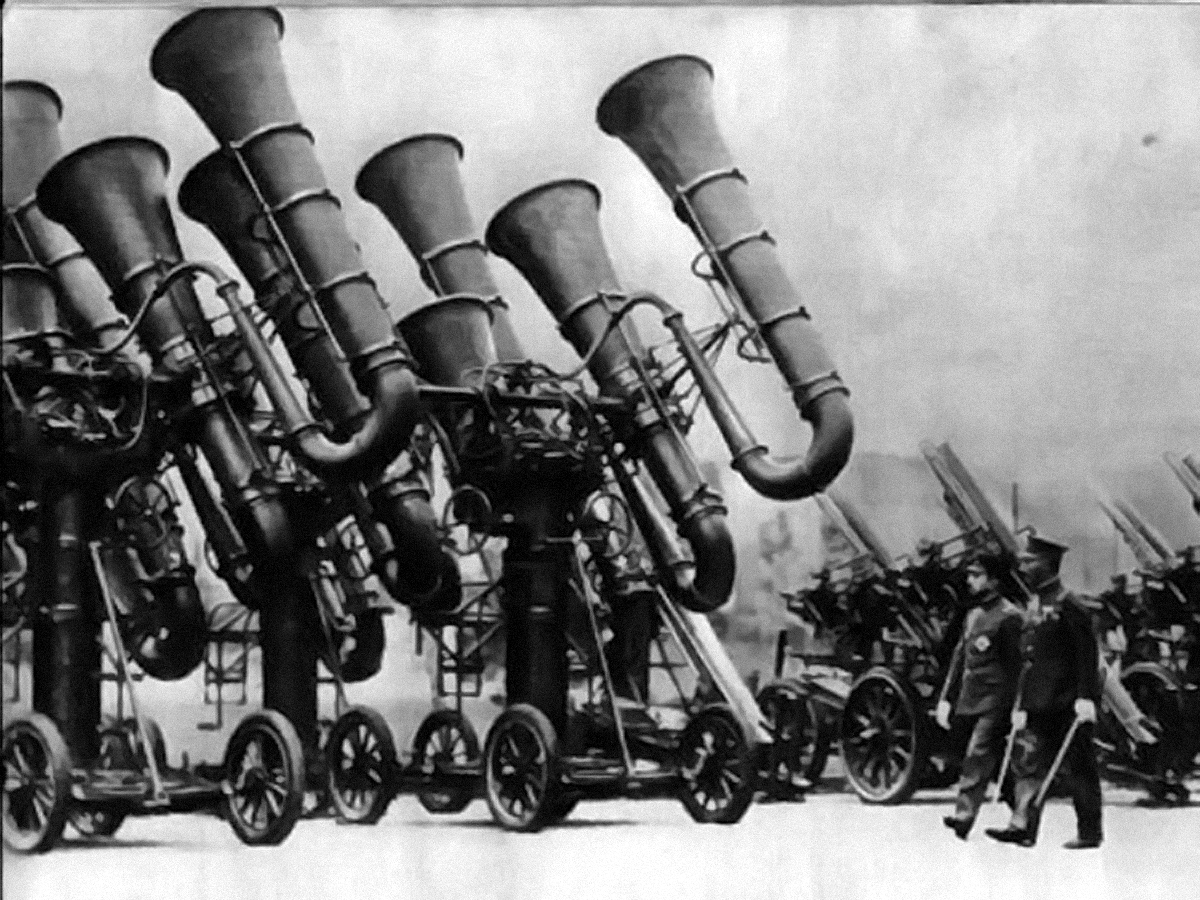
Zf617. Pre-World War II photograph of Japanese Emperor Shōwa (Hirohito) inspecting military acoustic locators mounted on 4-wheel carriages. This picture is from Wikipedia, look for the URL above.
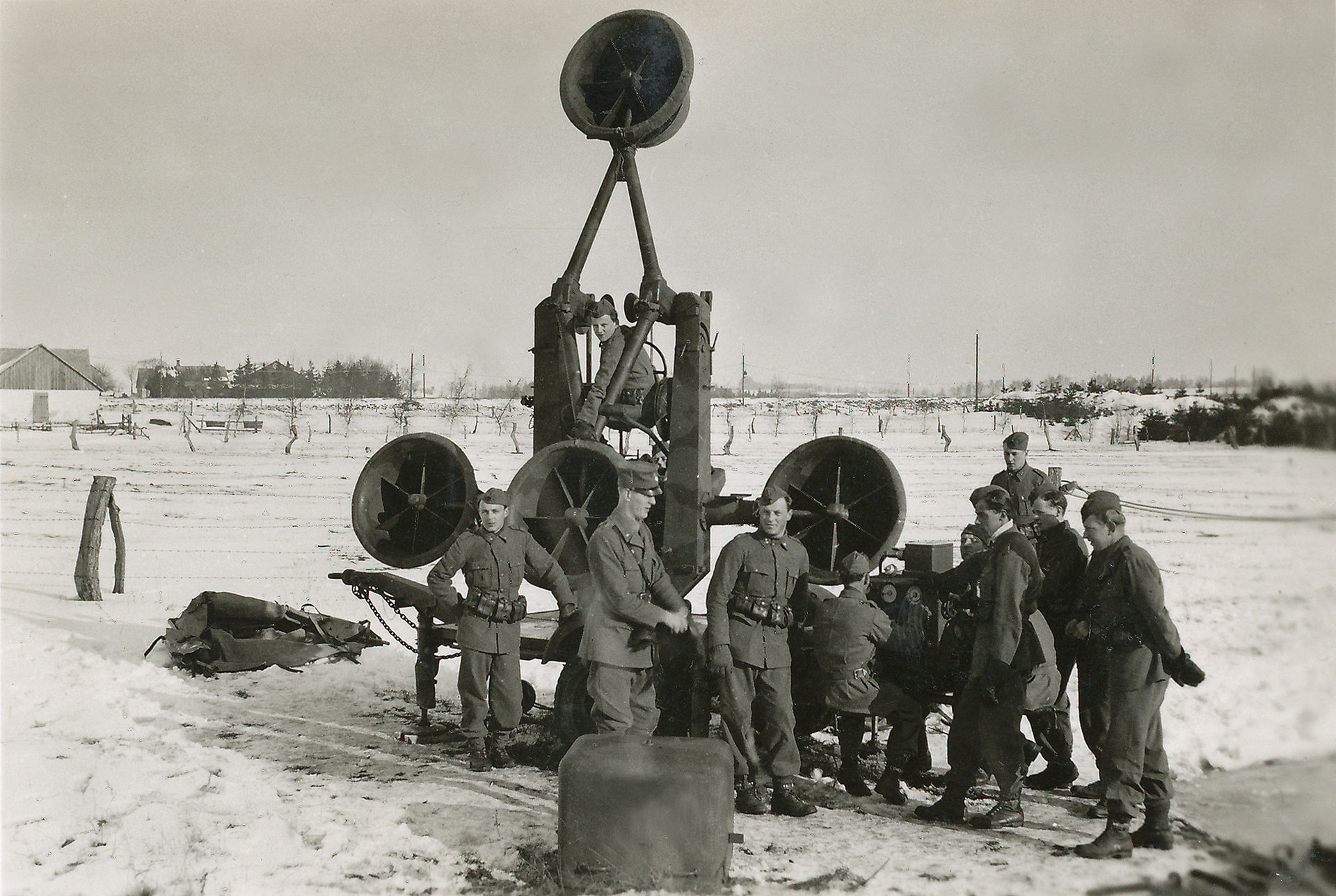
Zf618. Swedish soldiers operating an acoustic locator in 1940. This picture is from Wikipedia, look for the URL above.
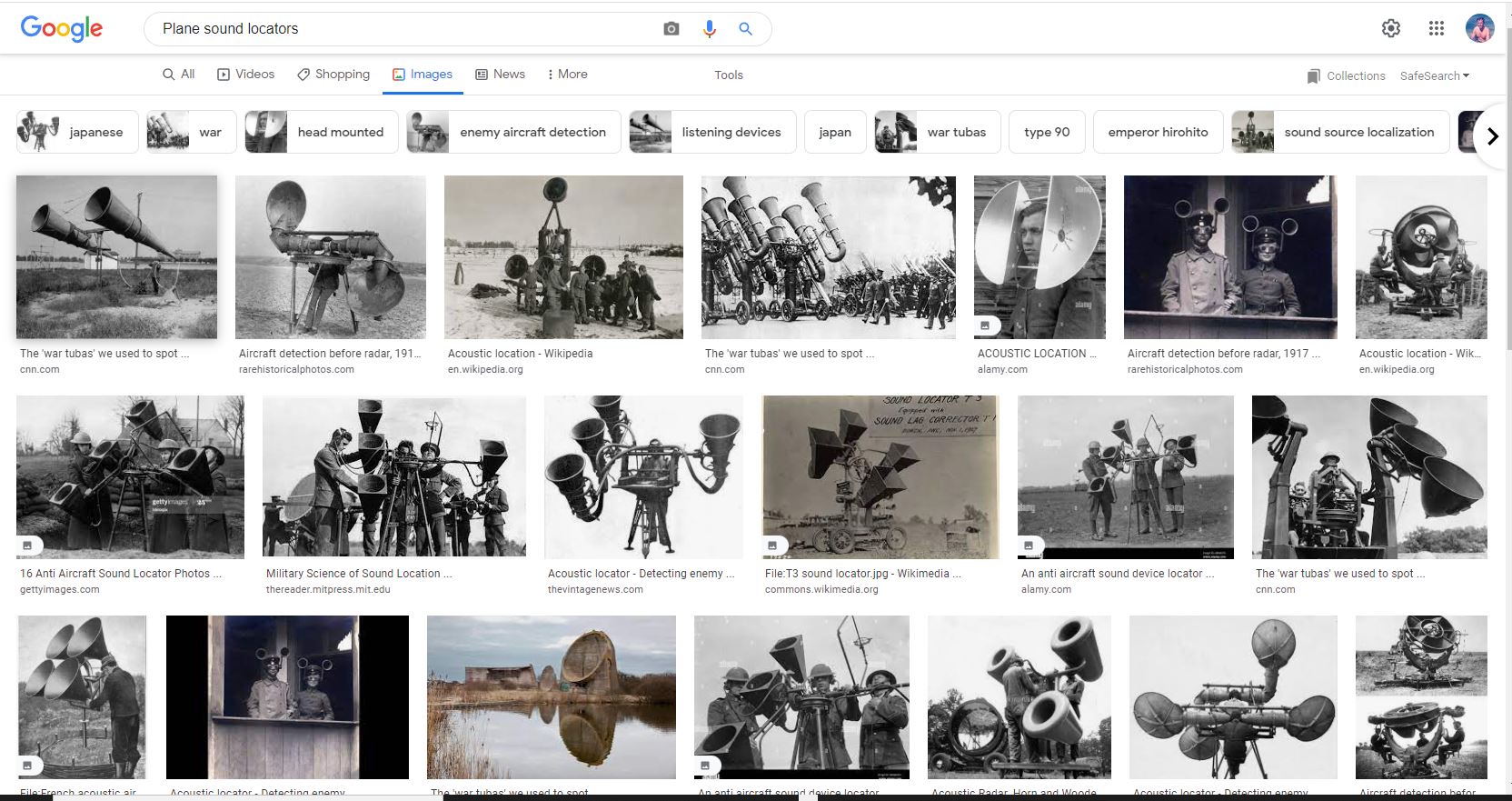
Zf619. This is a Google Image Search for sound detecting equipment.
————————————————————————-
Aircraft Detecting Devices, from CDSG
These two pictures of Anti Aircraft (AA) Detecting Devices on Corregidor before WWII came from two friends in the Coastal Defense Study Group (cdsg.org), Karl Wilhelm Schmidt who sent them with Glen’s permission. The pictures are part of The Riley McGarraugh Collection and Glen Williford owns the collection now and holds the copyright for them. Karl and Glen and I have met and explored the Manila and Subic Bay Forts, together, several times.
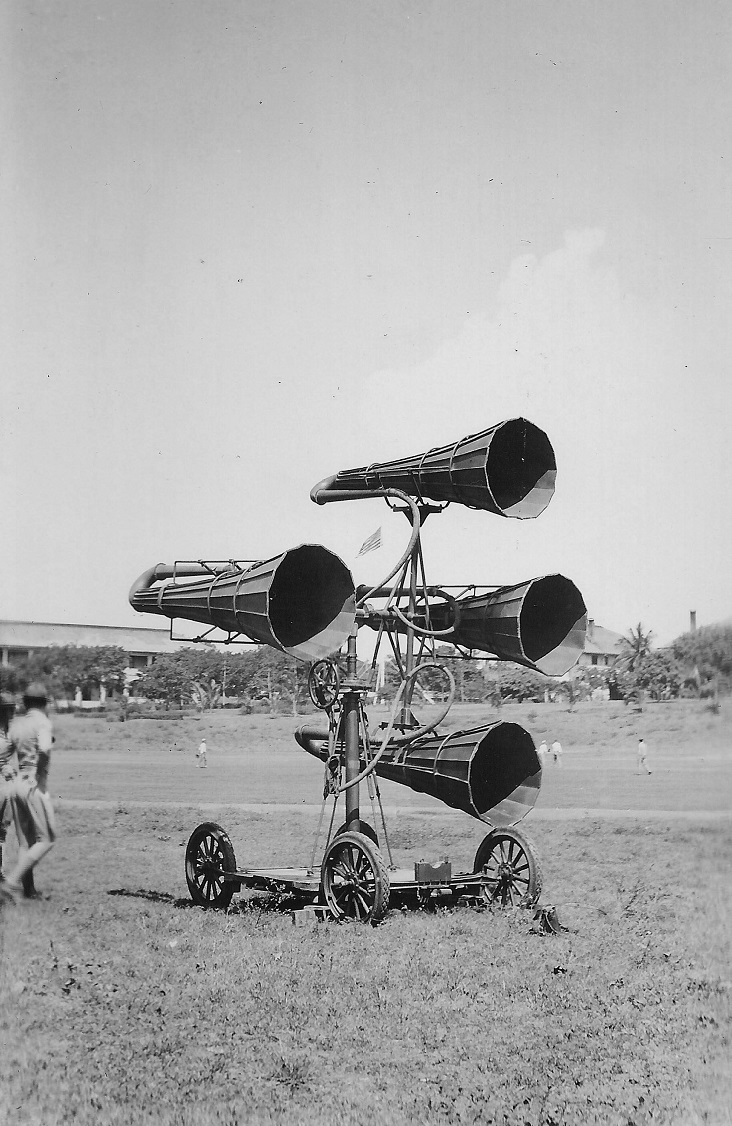
Zf641. This is a sound detecting device of the 60th Coastal Artillery Regiment in Fort Mills on Corregidor Island in the 1930s from The Riley McGarraugh Collection. Photo is courtesy of Glen Wiliford who holds the copyright to it.
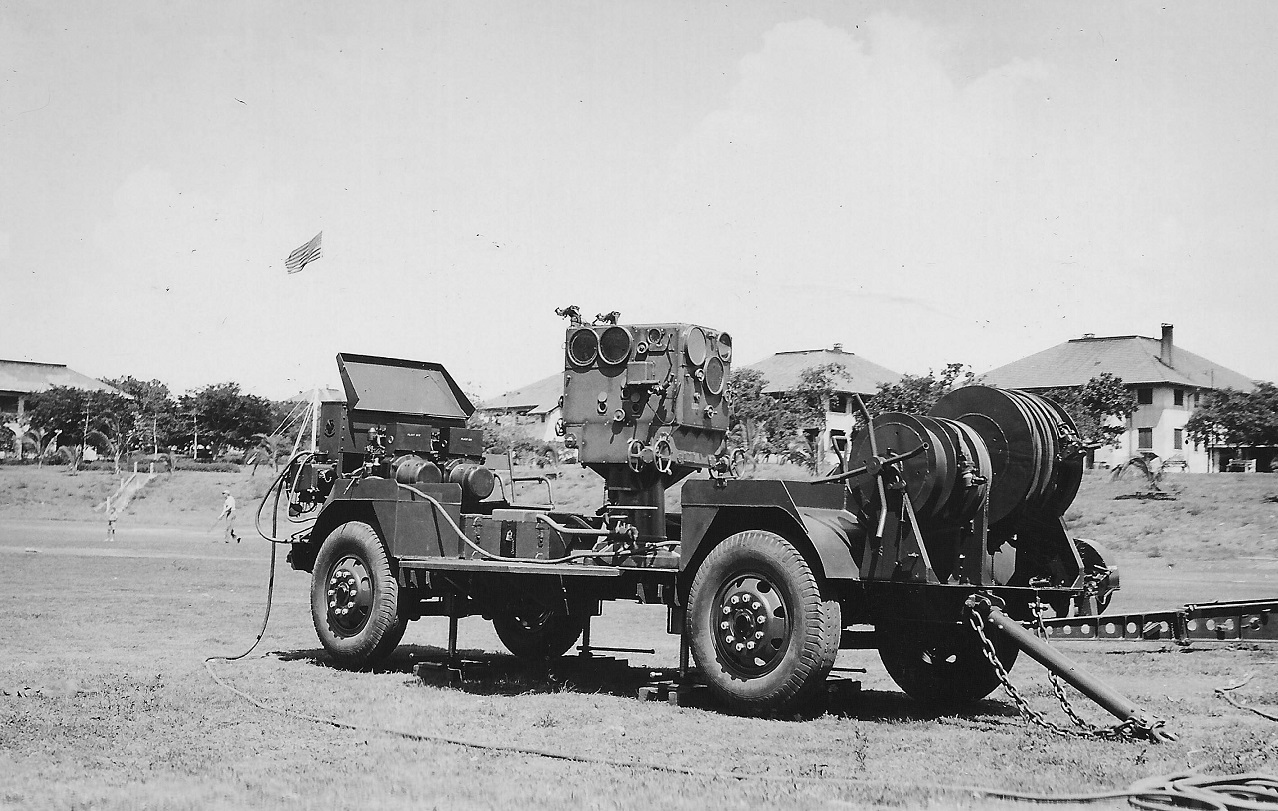
Zf642. This, I believe, must to a gun fire direction device for an AA gun of the 60th Coastal Artillery Regiment in Fort Mills on Corregidor Island in the 1930s from The Riley McGarraugh Collection. Photo is courtesy of Glen Wiliford who holds the copyright to it.
The story of The Riley McGarraugh Collection:
The Riley McGarraugh Collection
Riley E. McGarraugh was a professional U.S. Coast Artillery Officer who left behind a wonderful collection of photographic images of the gun batteries forming the Harbor Defenses of Manila Bay from the interwar period. McGarraugh was born in Iowa in 1894 and commissioned in the army during the First World War. His entire career was spent in the Coast Artillery branch. He served two terms of duty in the Philippines – the first in the early 1920s (1922-1923). Apparently as a lieutenant he was battery commander of the newly completed Battery Smith (two long-range 12-inch guns), as he penned an article on fire control experiments conducted at this battery which was published in September 1923 in the Coast Artillery Journal. He was again assigned to Fort Mills on Corregidor in 1933, apparently then a Captain.
Later in the 1930s McGarraugh held a number of staff assignments, and did not see combat in the war. His final military assignment was as commanding officer of Fort Miles at the Delaware capes; in fact he help shut down the post’s coast artillery assignment as part of his final military duties. He retired as full colonel in the years after the war.
Riley was an avid amateur photographer. Using a large-format camera he documented at least his second tour of duty in the Philippines with almost 900 surviving negatives and prints. While never serving in the Signal Corps or having official responsibilities as a photographer, the nature of the surviving shots clearly demonstrate that he was requested to document the exercising of almost every battery of the defenses (including the outer islands of Fort Drum, Fort Frank and Fort Hughes that were only periodically occupied) and the official reviews and ceremonies of the command. His enthusiasm for his hobby led directly to his second vocation. After the Second World War he began a professional studio in Lewes, Delaware and continued with it for over twenty years until his death in 1974.
Many of McGarraugh’s surviving photographs, particularly those in Delaware, were contributed to the Lewes Historical Society, where they can still be viewed. However a small collection of aircraft photographs were donated to the Smithsonian Air and Space Museum in the 1980s. Additionally his albums of negatives (800+) and prints (300+) of Philippine service were obtained first by historian E. R. Lewis, and eventually by Glen M. Williford. An edited selection of these photographs, emphasizing the gun emplacements and weapons of the Harbor Defenses of Manila Bay, are included in this collection of scans.
—————————————————
Pictures of the early (1920s) and later (1930s) sound locators in Hawaii.
These pictures were provided by an author about the Coastal Defense matters and a longtime member of the Coastal Defense Study Group, https://cdsg.org/ . They are public domain photos!
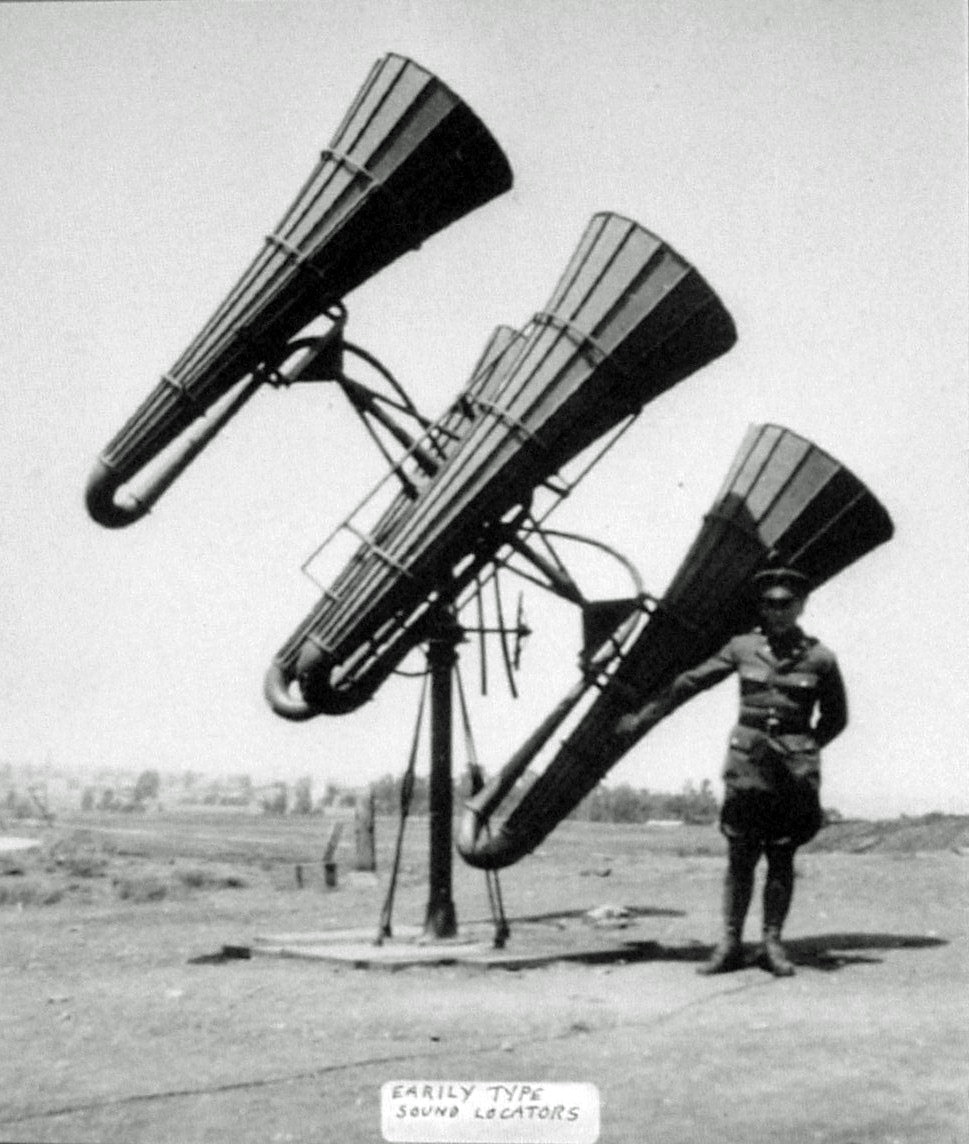
Zf643. This is an US Army 1920s anti aircraft sound locator in Hawaii. This photo is courtesy of Glen Williford, https://cdsg.org/
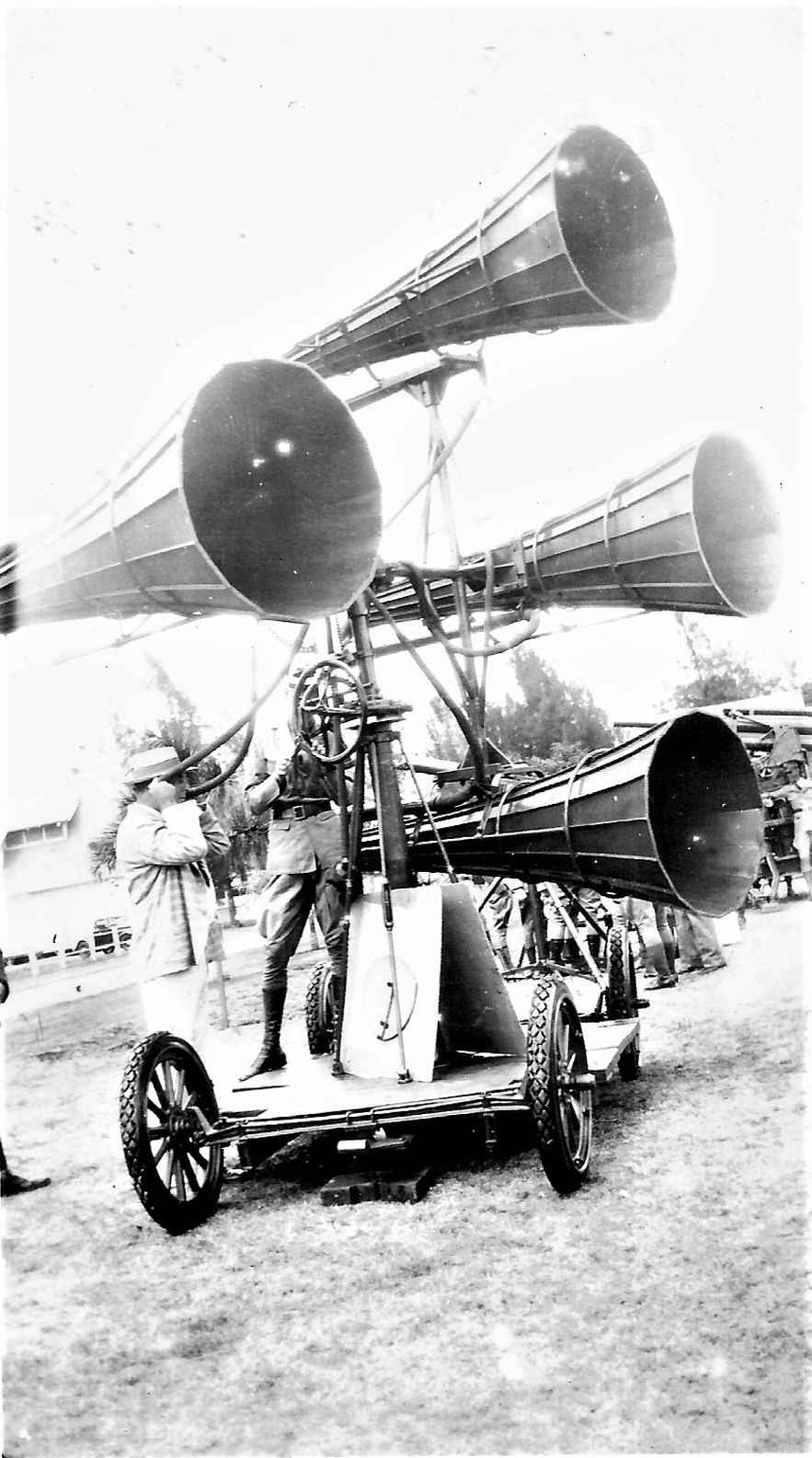
Zf644. This is an US Army 1920s anti aircraft sound locator on Oahu Island in Hawaii. This photo is courtesy of Glen Williford, https://cdsg.org/

Zf645. This is an US Army 1930s anti aircraft sound locators with search lights in Fort Shafter Review on Oahu Island, Hawaii. This photo is courtesy of Glen Williford, https://cdsg.org/
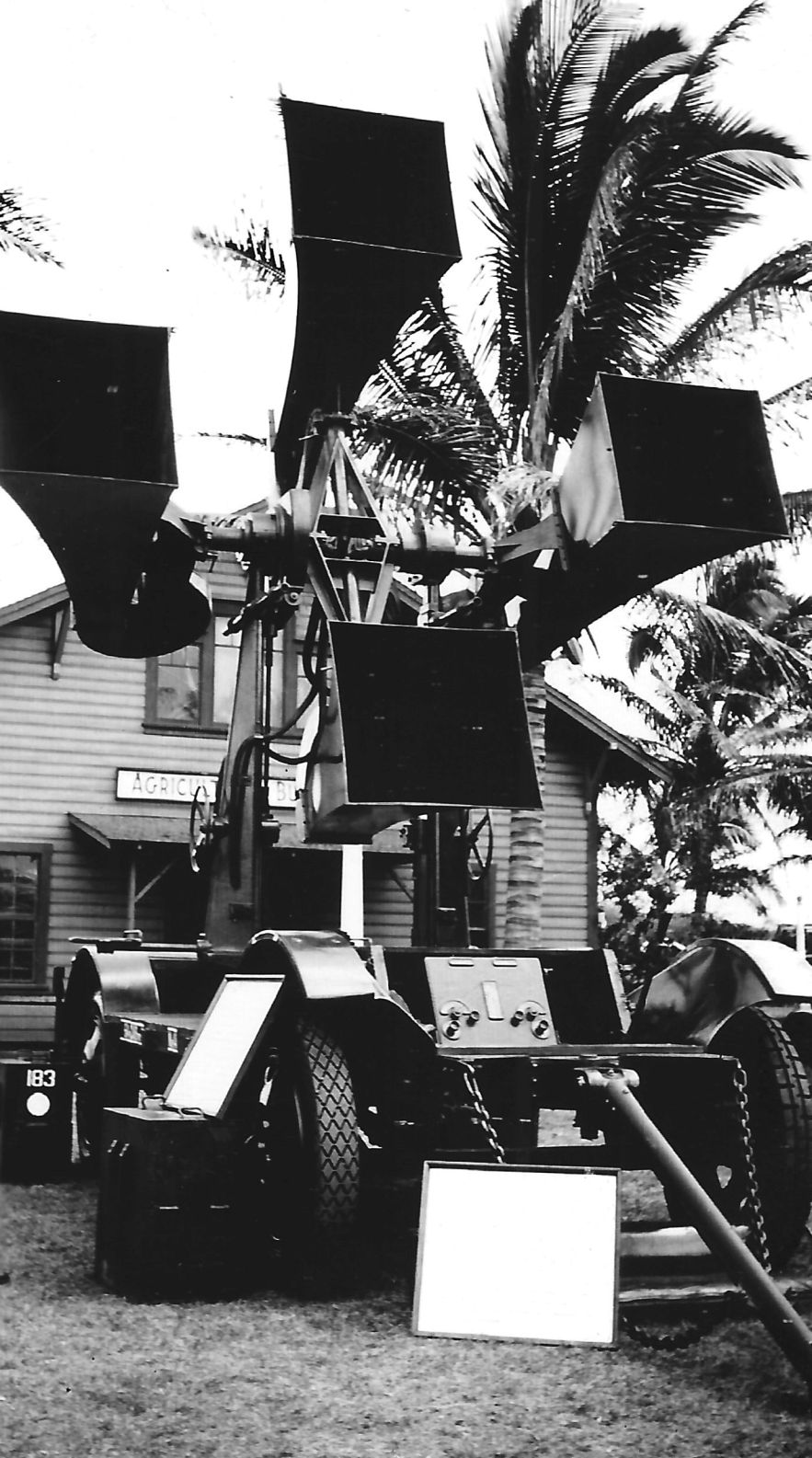
Zf646. This is an US Army 1930s anti aircraft sound locators of the Hawaiian 64th CA on Oahu Island. This photo is courtesy of Glen Williford, https://cdsg.org/
———————————————————–
Tourists visit Corregidor in 1949.
This is from a presentation in the Facebook page World War Pictures dated 3rd Dec. 2022.
These pictures are from the LIFE Magazine Archives. Jack Birns Photographer.
The presentation has 20 images, original color and B/W pictures; I collected 4 images to share them here. They are outstanding pictures about Corregidor, all 20 images! This is the URL, click here:
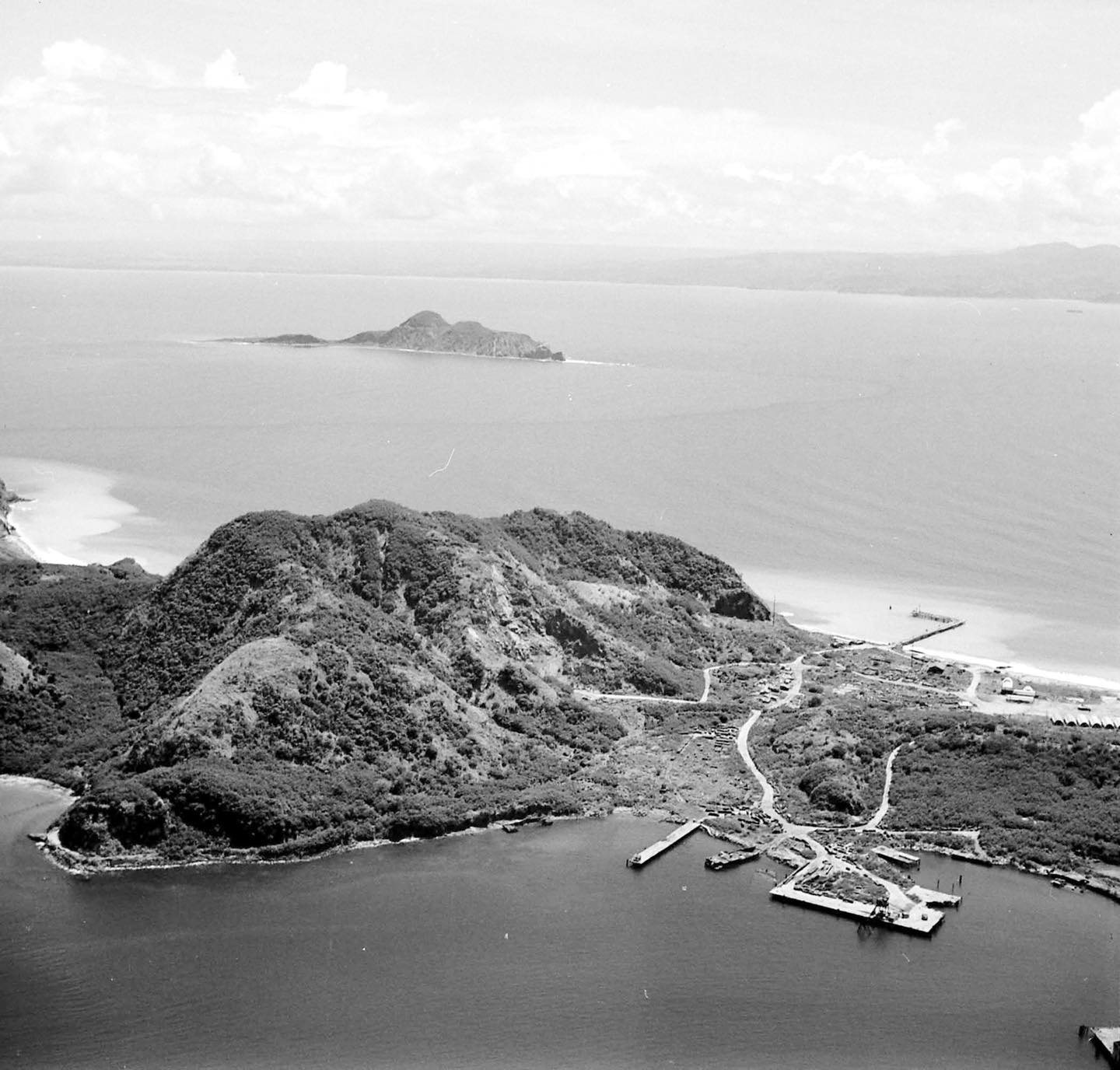
Z041. This is an aerial view of Corregidor, from the LIFE Magazine Archives, presented on the World War Pictures Facebook page. Jack Birns is the Photographer, the presentation indicates 1949 pictures. See the URL above!
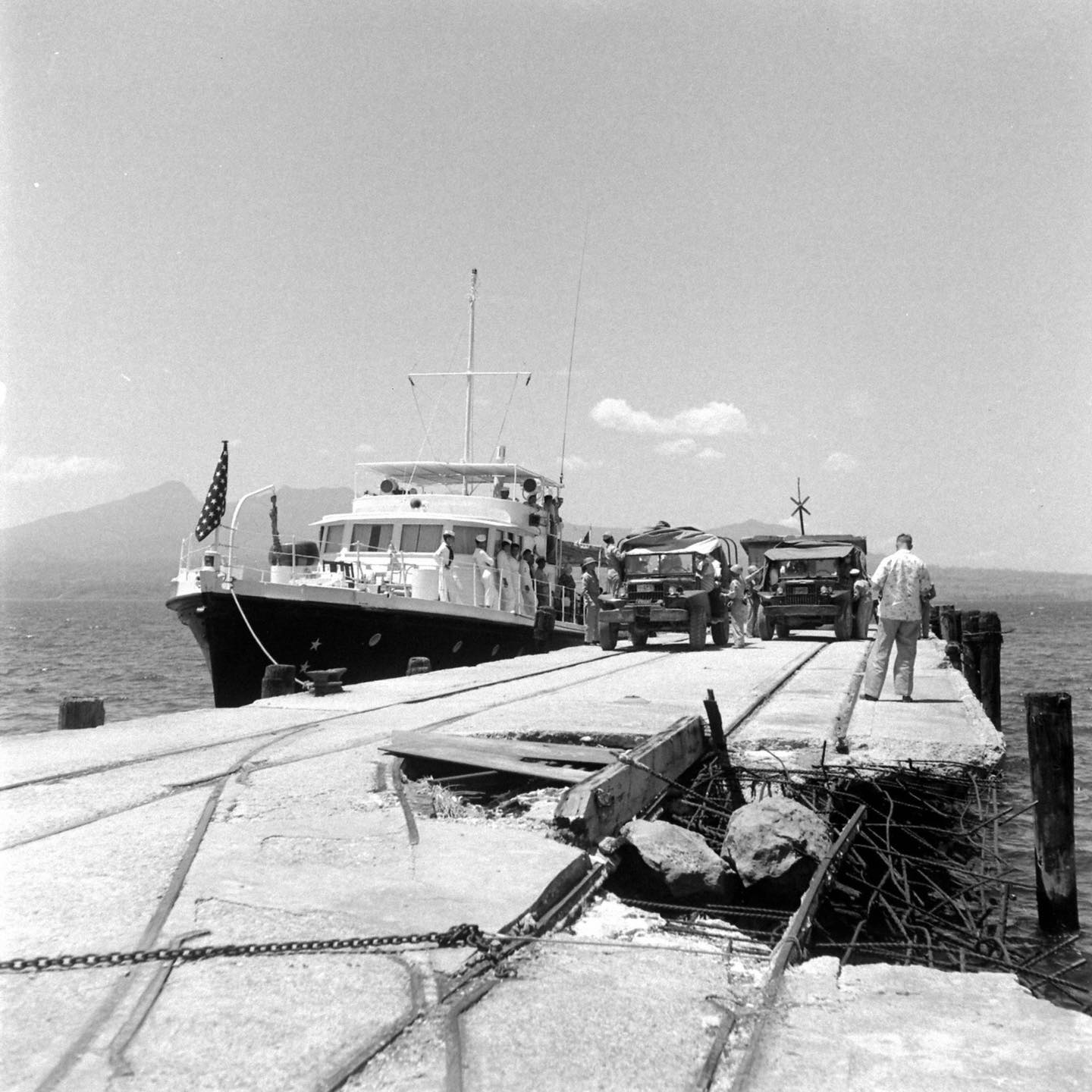
Z0042. A Two Star Admiral Barge is alongside Lorcha Dock on the North Shore of Bottomside Corregidor. It apparently brought the visitors. This is a view of Corregidor, from the LIFE Magazine Archives, presented on the World War Pictures Facebook page. Jack Birns is the Photographer, the presentation indicates 1949 pictures. See the URL above!
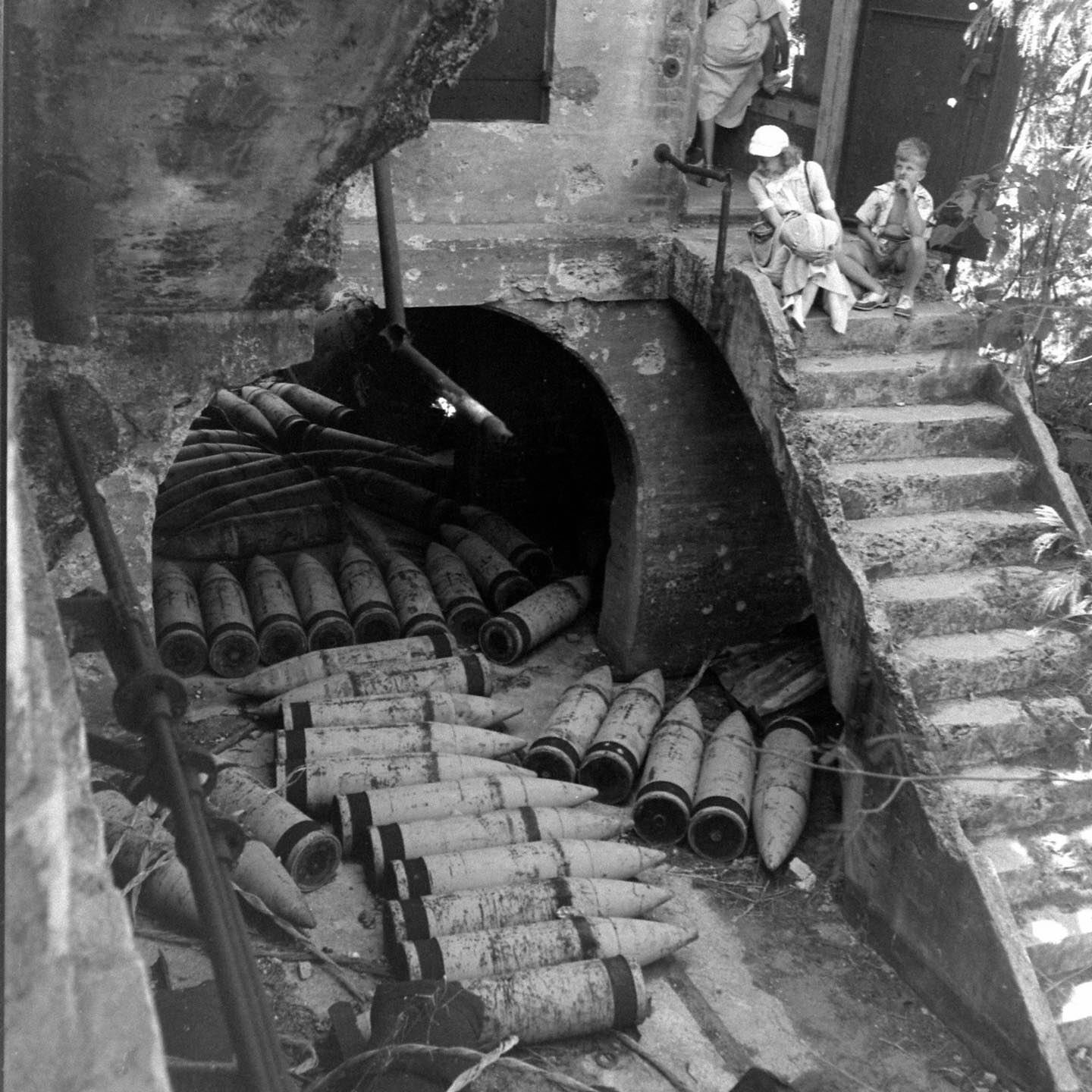
Z043. This is at one of the high caliber coastal defense batteries on Corregidor, the former Fort Mills. Plenty of stuff is still lying around. This is a view of Corregidor, from the LIFE Magazine Archives, presented on the World War Pictures Facebook page. Jack Birns is the Photographer, the presentation indicates 1949 pictures. See the URL above!
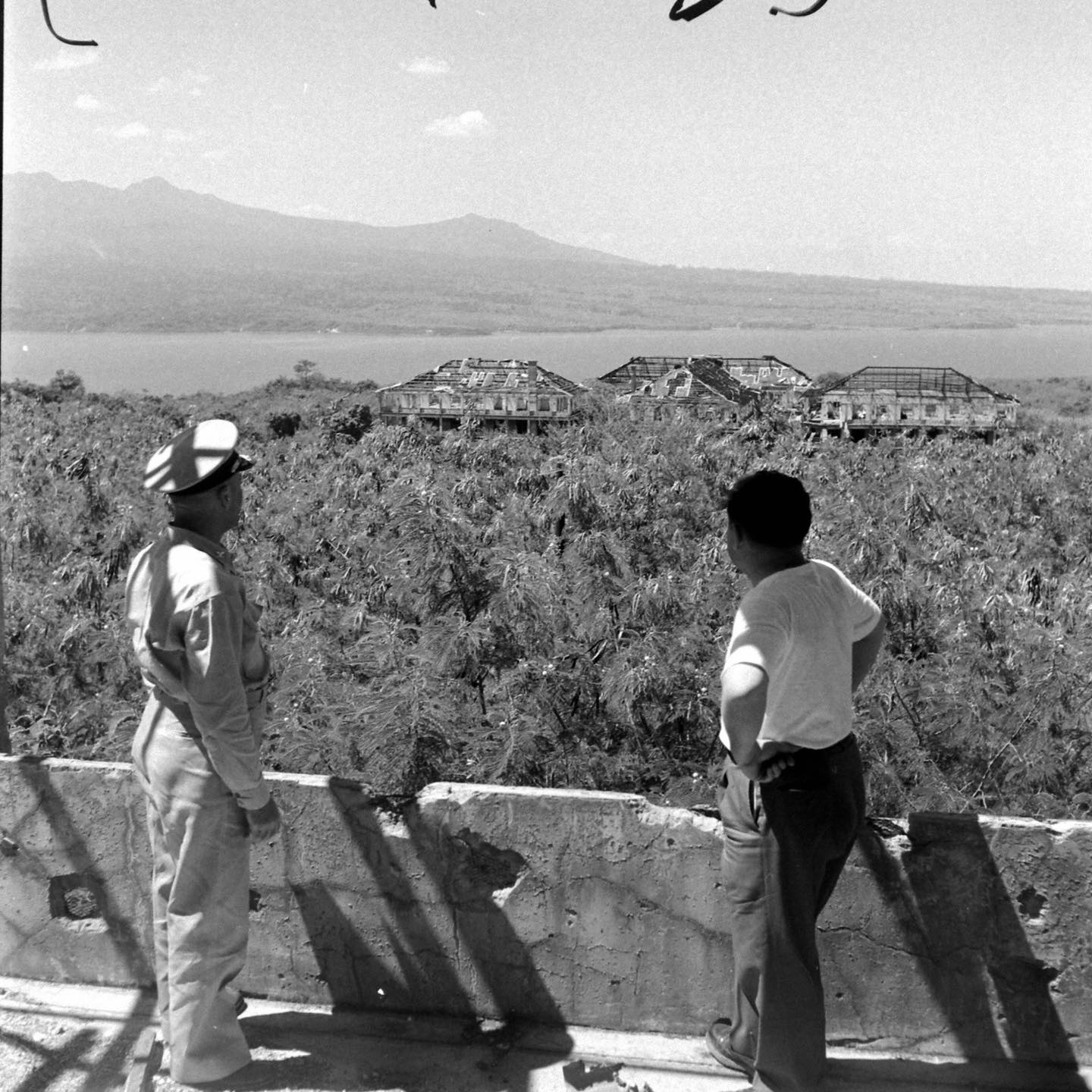
Zg044.This is a view of the Fort Mills Hospital from the top of the so-called Mile Long Barracks. I notice the hospital roof framing is still in place. The peak in the middle of the picture is Mt. Limay on Bataan which is east of Mt. Mariveles. This is a view of Corregidor, from the LIFE Magazine Archives, presented on the World War Pictures Facebook page. Jack Birns is the Photographer, the presentation indicates 1949 pictures. See the URL above!